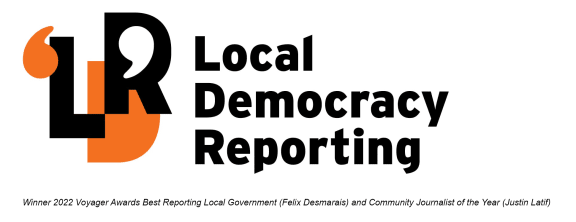
An aerial view of the whitebait habitat restoration area on the banks of the Whanganui River. Photo: LDR / Horizons Regional Council
A community effort to create more space for whitebait to spawn in the Whanganui River came up against an unexpected snag: an old dump site on the river’s edge.
The work between the Department of Conservation (DOC), Te Ao Hou marae and Horizons Regional Council chose a riverbank site beside the marae for the restoration project.

But preparation earthworks at the site revealed the area had been used in the past as an informal tip.
The discovery put a temporary halt to the conservation work.
“Contractors had to take over 30 loads of rubbish to the dump,” DOC river ranger Jane Taylor said.
Despite the setback, restoration efforts at Te Ao Hou marae and neighbouring properties in Aramoho are again underway.
The aim is to create 500 metres of additional spawning habitat for whitebait species inanga/atutahi.
Marae kaitiaki Geoff Hipango said he was excited to have the riverbank restoration project back on track.
He said the restoration had been part of the marae community’s vision but the involvement of DOC and Horizons had helped speed up the work.
The work had been supported with Whanganui tribal knowledge systems, while science and collaboration with the wider community were also important aspects of the restoration.
“Healing the river is also healing for us. We want to create a paradise,” Hipango said.
“If we lay the groundwork, the next generation will hopefully inherit an awa that’s in better condition. Ko te awa te mātāpuna o te ora – the river is the spring of our wellness. Not just for our people but for the river herself.”

Volunteer Sol Walsh at a community planting day during which 2000 natives were planted. Photo: LDR / Horizons Regional Council
DOC is working in a partnership with others to restore the Whanganui River catchment under its Ngā Awa river restoration programme. The programme focuses on restoring 14 priority river catchments around the country.
Taylor said the work in Whanganui began in response to a survey showing how little spawning habitat was available in the lower Whanganui River.
“It has been truly collaborative in the way neighbours and our many contractors have worked closely with the marae to agree on an approach.
“The first step was to remove willows, pampas and other weeds before reshaping the bank to reduce steepness.
“A gentler slope means more area is under water in the big spring tides when atutahi lay their eggs,” Taylor said.
A community planting day at the marae recently put in place more than 2000 native plants to help stabilise the bank and provide spawning habitat.
LDR is local body journalism co-funded by RNZ and NZ On Air